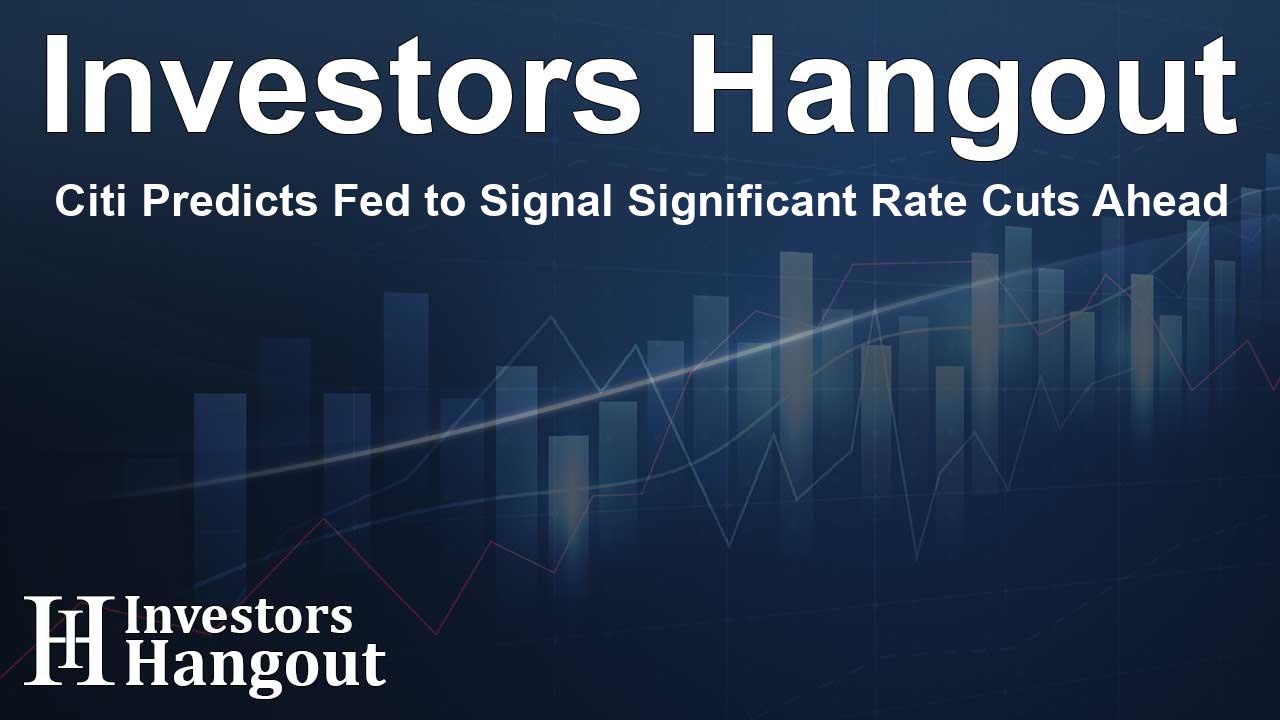Citi Predicts Fed to Signal Significant Rate Cuts Ahead

Citi sees the Fed tilting toward deeper rate cuts in its projections
Citi analysts now expect the Federal Reserve to mark down its path for interest rates, pointing to larger and more numerous cuts than previously signaled. The call comes ahead of the central bank’s upcoming policy meeting, where updated projections—and the tone around them—will shape how investors read the road ahead for growth and inflation.
What Citi expects to change in the projections
According to Citi, Fed officials will likely make notable edits to the Summary of Economic Projections at the meeting. They anticipate a higher projected unemployment rate by year-end alongside a lower expected policy rate path. In short: a softer labor market outlook paired with more easing than the last round of projections implied.
Rate cuts and the signals policymakers may send
Citi thinks voting members will flag roughly 100 basis points of cuts over the year. That’s a sharp shift from June, when the projections effectively penciled in just a single 25-basis-point reduction. The message would be clear: the balance of risks has moved enough to justify a quicker step-down in rates.
Inflation’s role in a more dovish tilt
The push toward easier policy, Citi says, rests on the latest inflation trend. They expect incoming data to confirm another month of slowing price pressures, which would make it four straight months of slower core CPI growth. That pattern has already nudged market expectations toward a fuller slate of cuts, and it gives the Fed more room to lean dovish without surprising investors.
How markets are priced—and why the median matters
Markets are currently braced for about 105 basis points of easing. Against that backdrop, a median projection of 75 basis points could land as relatively hawkish. The path from there won’t be linear. The size of the first move often sets the tempo for what follows, and the initial step could do as much signaling as the numbers on the page.
Why the first cut could steer the whole path
Citi’s base case points to a 50-basis-point reduction in September. A cut of that size could open the door to a string of follow-up 25s in the months after, putting the year’s total near 100 basis points. If the Fed instead opts for a smaller first move—25 basis points—it might leave room for a larger 50-basis-point adjustment soon after to catch up. The sequence matters as much as the sum.
Eyes on the Fed—and on the broader debate
Markets will be glued to the decision and the revised projections. They arrive amid an active debate over the economy’s underlying strength—resilient in some accounts, more fragile in others. The Fed’s wording and numbers will be read side by side, and both will carry weight for how the rest of the year could unfold.
Frequently Asked Questions
What is Citi expecting from the Fed’s rate path?
Citi anticipates roughly 100 basis points of cuts over the year, a much larger easing profile than earlier projections that suggested just a single 25-basis-point move.
Why would the Fed lower its projected policy rate now?
Recent inflation readings have slowed, and Citi expects that trend to continue. A softer inflation backdrop gives the Fed more room to project lower rates while aiming to support economic stability.
How might unemployment expectations change in the new projections?
Citi expects the Fed to mark the projected year-end unemployment rate higher than before, alongside a lower path for policy rates—both shifts that align with a more cautious growth outlook.
What are the possible scenarios for the next move?
Citi’s base case is a 50-basis-point cut in September, followed by smaller 25-basis-point steps. If the Fed starts with 25 basis points instead, a larger 50-basis-point cut could follow to catch up.
How are markets likely to interpret the median projection?
Markets are priced for about 105 basis points of easing. If the Fed’s median shows only 75 basis points, investors may read that as comparatively hawkish, making the size of the first cut even more important.
About The Author
Contact Thomas Cooper privately here. Or send an email with ATTN: Thomas Cooper as the subject to contact@investorshangout.com.
About Investors Hangout
Investors Hangout is a leading online stock forum for financial discussion and learning, offering a wide range of free tools and resources. It draws in traders of all levels, who exchange market knowledge, investigate trading tactics, and keep an eye on industry developments in real time. Featuring financial articles, stock message boards, quotes, charts, company profiles, and live news updates. Through cooperative learning and a wealth of informational resources, it helps users from novices creating their first portfolios to experts honing their techniques. Join Investors Hangout today: https://investorshangout.com/
The content of this article is based on factual, publicly available information and does not represent legal, financial, or investment advice. Investors Hangout does not offer financial advice, and the author is not a licensed financial advisor. Consult a qualified advisor before making any financial or investment decisions based on this article. This article should not be considered advice to purchase, sell, or hold any securities or other investments. If any of the material provided here is inaccurate, please contact us for corrections.
